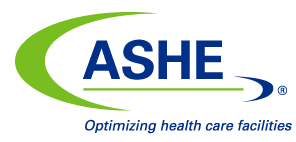Lunch & Learn Series: Lunch & Learn: Specified Technologies Presents Barrier Management Health Care Solutions Ongoing and In the New Normal
Event Format
Date
Tue, Jul 21, 2020, 12:00 PM – Tue, Jul 21, 2020, 12:30 PMCost
Type
Event Host

Open To
Description
Speaker:
Kelly Mason, Director of Healthcare Partnerships
Description:
Managing barriers in today’s health care facility can be a real challenge. There is a multitude of processes related to barriers and, in any given week, a variety of trades and hospital personnel come in contact with them. In many cases, the approach to handling compliance issues is reactive. This approach is costly and really doesn’t provide a true compilation of work being performed. Improper penetrations in barriers continue to be one of the top 10 citations by inspection professionals. While code requires anyone penetrating barriers to seal them to a specific standard, this is often incomplete, disregarded or misunderstood by those doing the installations.
Managing, documenting and inspecting barriers within a facility is best accomplished using a proactive approach: implementing a standard from the conception of design. In order to implement a protocol for managing vendors, you need a process that includes proactive tasks, such as a permitting program. The process should document all barriers and penetrations, and ensure quality control throughout closeout inspection. The protocol should have an accurate, up-to-date account of the “who, what, when, where and how” details when installations, maintenance and inspections in each barrier are performed. With tightened budgets, increased regulatory requirements and reduced staffing, maintaining barriers by implementing a barrier protocol saves time, money and resources. Firestopping is the last line of defense for patients and caregivers within the hospital. There are many divisions involved in the process such as engineering, construction, and design and information technology (IT).
This session will cover the process of implementing a barrier management protocol. We will discuss what quality standard operating practice for barriers could look like and additional tools that can be used to achieve compliance.
Learning Objectives:
- Identify the advantages of a proactive barrier management protocol.
- Create a protocol based on quality standard operating practice.
- Access digital tools for success
- Describe how COVID-19 has brought a need for new processes
*Lunch and Learn webinars are not eligible for CECs or contact hours.
Sponsored by

